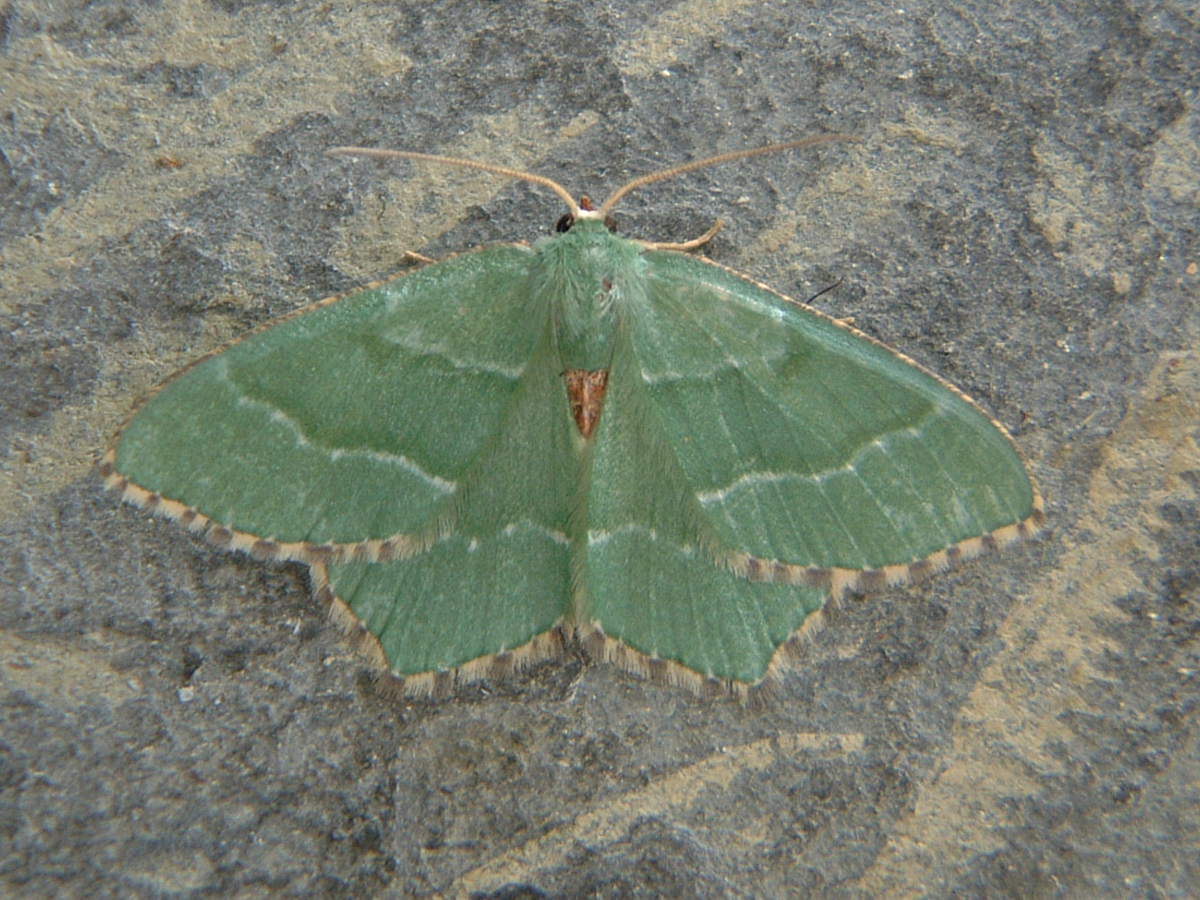
Photo © Andy Mitchell
The common emerald (Hemithea aestivaria) is a moth of the family Geometridae. The species is found throughout the Nearctic and Palearctic regions and the Near East. It is mostly commonly found in the southern half of the Ireland and Britain. It was accidentally introduced into southern British Columbia in 1973.
All wings are generally dark green with grey and white chequered fringes and narrow white fascia, two on the forewing, one on the hindwing. The green colouration tends not to fade over time as much as in other emeralds. The hindwings have a sharply angled termen giving the moth a very distinctive shape. The wingspan is 30–35 mm. It flies at dusk and night in June and July and will come to light.
The larva is green with reddish-brown markings and black v-shaped marks along the back. The young larva will feed on most plants but later it feeds on trees and shrubs. The species overwinters as a larva.
Source: Wikipedia
The primary larval foodplants are Aspen (Populus tremula), barberries (Berberis spp.), birches (Betula spp.), Blackthorn (Prunus spinosa), cinquefoils (Potentilla spp.), clovers (Trifolium spp.), currants (Ribes spp.), Dog-rose (Rosa canina), hawthorns (Crataegus spp.), Hazel (Corylus avellana), Honeysuckle (Lonicera periclymenum), jasmines (Jasminum spp.), Knotgrass (Polygonum aviculare), limes (Tilia spp.), Mugwort (Artemisia vulgaris), oaks (Quercus spp.), plantains (Plantago spp.), Sea-buckthorn (Hippophae rhamnoides) and willows (Salix spp.).